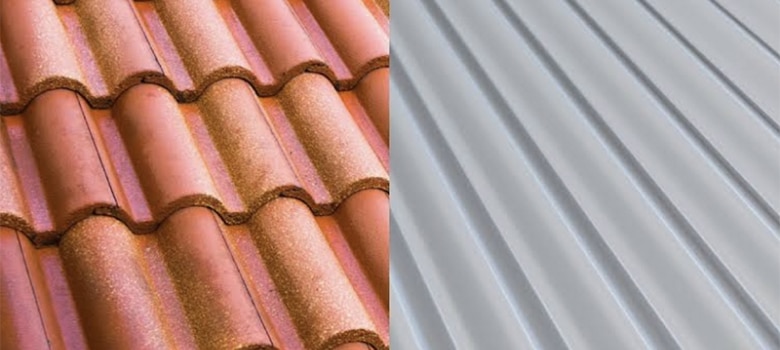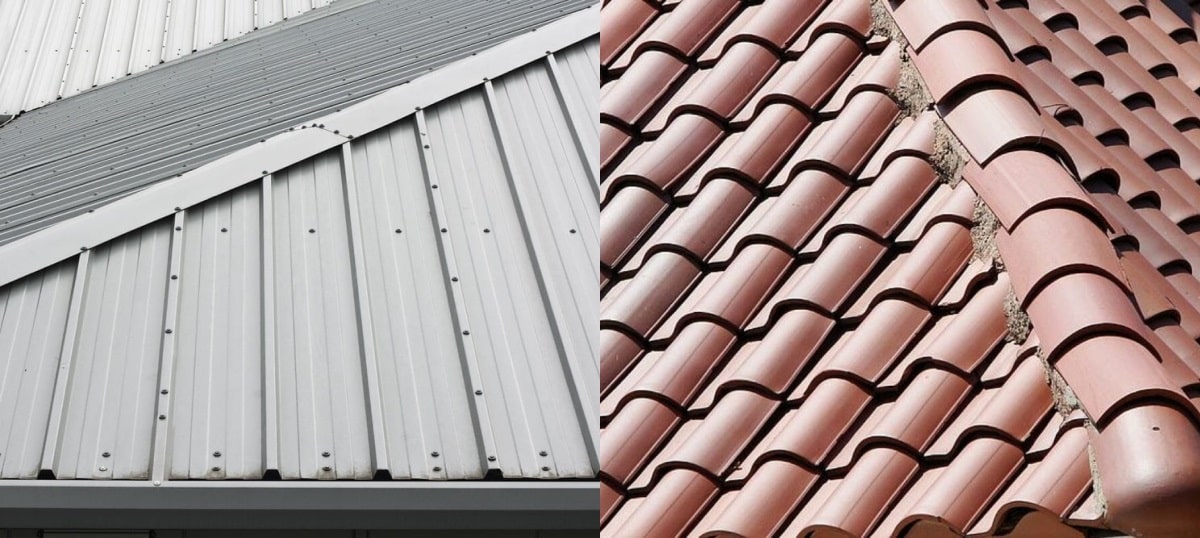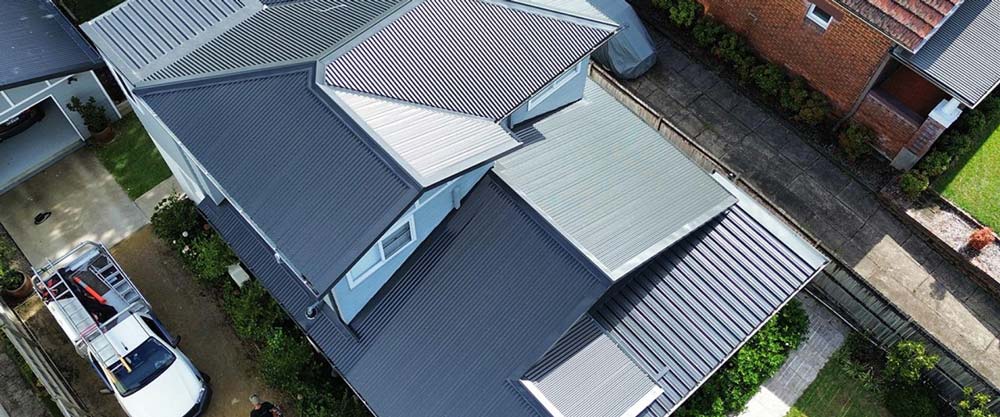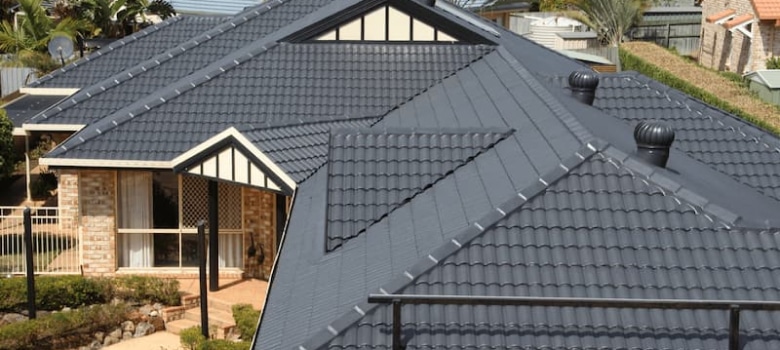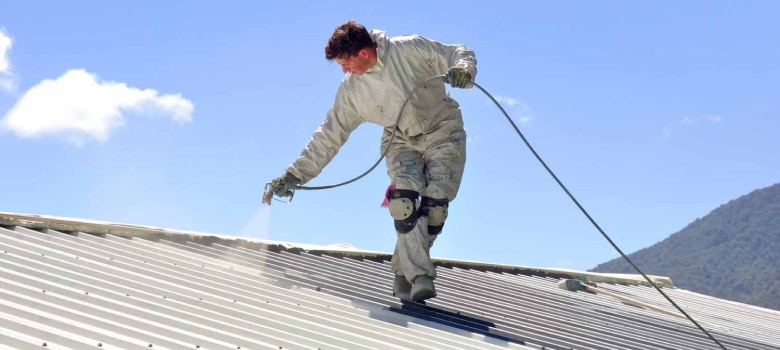Are you contemplating a roof upgrade or replacement for your Brisbane home? If so, you’re likely to find yourself at a crossroads, pondering the choice between two popular materials: Colorbond vs tile roofing.
Both options have their unique advantages and characteristics that can significantly impact the aesthetics, durability, and overall performance of your roof.
In this article, we’ll cover:
- Overview of Colorbond
- Overview of Tiles
- Pros and cons of Colorbond and Tiles
- Comparison of Colorbond vs Tiles
- Government Incentives and Warranties
Colorbond, a steel material, and tiles, typically made from clay or concrete, have long been the go-to choices for homeowners in the Sunshine State.
In this guide, we will delve into the differences between these two materials, helping you make an informed decision for your Brisbane abode.
VINCENT ROOFING TIPS:
|
Overview of Colorbond Roofing: Sleek, Modern, and Durable
Colorbond roofing has gained immense popularity in Brisbane due to its contemporary appearance and remarkable durability. Comprising high-quality steel sheets coated with a layer of corrosion-resistant paint, Colorbond roofs are known for their sleek, clean lines and modern aesthetics.
The importance of Colorbond lies in its ability to withstand the harsh Australian climate. Brisbane’s scorching summers, torrential rains, and even the occasional hailstorms pose no threat to a well-installed Colorbond roof.
Its corrosion-resistant properties make it a low-maintenance choice that can keep your home safe and dry for decades.
Overview of Tile Roofing: Timeless Charm and Thermal Insulation
This material exudes timeless charm and has a rich history in Brisbane’s architectural heritage. Typically crafted from clay or concrete, tile roofs offer a classic look that complements both traditional and modern homes.
One of the key advantages is its exceptional thermal insulation. Brisbane’s climate can be unforgiving, with scorching summers and sudden temperature drops.
Tile roofs help regulate the indoor temperature, keeping your home cooler in summer and warmer in winter. This thermal efficiency can translate to substantial energy savings over time.
When choosing between Colorbond vs tile roofing for your Brisbane home, you’ll be navigating a decision that involves aesthetics, durability, and thermal performance.
So, whether you’re aiming for a sleek and modern look with Colorbond or a timeless charm with tiles, we’ve got you covered. Let’s explore these options further to ensure your roof not only looks great but also stands the test of time.
The Battle of the Rooftops: Colorbond vs. Tile – Weighing the Pros and Cons
To make an informed decision for your Brisbane home, let’s take a closer look at the pros and cons of each option:
Colorbond:
Pros:
- Durability: Colorbond roofs are renowned for their longevity. They can withstand Brisbane’s harsh weather conditions without fading, cracking, or rusting.
- Low Maintenance: Minimal maintenance is required to keep a Colorbond roof looking pristine. A simple periodic clean is usually all that’s needed.
- Modern Aesthetics: If you’re after a sleek, contemporary appearance, Colorbond offers a wide range of colours to choose from, allowing you to match your roof to your home’s style.
- Lightweight: Colorbond is lightweight, which can reduce structural stress on your home.
- Fire-Resistant: This material is non-combustible, providing an added layer of safety in bushfire-prone areas.
Cons:
- Initial Cost: This material tends to have a higher upfront cost compared to tiles.
- Noise: During heavy rain, some homeowners report that the noise on a Colorbond roof can be quite loud.
- Limited Insulation: Without additional insulation, Colorbond roofs may not offer the same level of thermal insulation as tiles.
Tile Roofing:
Pros:
- Classic Appearance: Tile roofs have a timeless appeal that suits a wide range of architectural styles.
- Thermal Insulation: They offer excellent thermal insulation, helping to regulate indoor temperatures and reduce energy bills.
- Variety: Tiles come in various materials, including clay and concrete, and a plethora of colours, providing flexibility in design.
- Longevity: Well-maintained tile roofs can last for decades, often with extended warranties.
- Eco-Friendly: Many tiles are made from natural materials and can be recycled, making them environmentally friendly.
When to Replace Your Roof: Seasonal Factors Explained
Cons:
- Weight: This material is heavier than Colorbond, potentially requiring additional structural support for your home.
- Maintenance: Tiles can break or crack over time and may require periodic maintenance to replace damaged ones.
- Costly Repairs: Repairs on tile roofs can be more challenging and costly due to their intricate installation.
- Fading: The colour of tile roofs can fade over time, diminishing their initial vibrancy.
Now that we’ve outlined the pros and cons of both Colorbond and Tiles, you can better evaluate which option aligns with your priorities and preferences.
In the following sections, we’ll dig even deeper into the nitty-gritty details to assist you in making an informed choice that suits your Brisbane home’s unique needs.
The Ultimate Showdown: Colorbond vs Tile Roofing – A Comprehensive Comparison
To help you make a well-informed decision for your Brisbane home, let’s delve into a detailed comparison of Colorbond vs tile roofing across several crucial factors:
Efficiency:
Colorbond:
It excels in efficiency due to its lightweight design and reflective coatings. Its ability to reflect sunlight can help keep your home cooler during scorching Brisbane summers, potentially reducing your cooling costs.
Additionally, it offers a clean, uninterrupted surface that allows for rainwater harvesting, making it environmentally friendly.
Tiles:
This material offers excellent thermal insulation, regulating indoor temperatures efficiently. However, their heavyweight may require additional structural support, potentially increasing construction costs.
Cost:
Colorbond:
While Colorbond may have a higher initial cost, it often requires less maintenance over its lifespan, making it a cost-effective choice in the long run. Its durability and low-maintenance nature can save you money over time.
Tiles:
This material generally has a lower upfront cost but may require more frequent maintenance and repairs, potentially offsetting the initial savings.
Durability and Lifespan:
Colorbond:
Colorbond roofs are known for their exceptional durability. They are corrosion-resistant and can withstand Brisbane’s challenging weather conditions without fading, cracking, or rusting. With proper maintenance, they can easily last 50 years or more.
Tiles:
Tile roofs are also durable but may require occasional maintenance to replace broken or damaged tiles. Properly maintained tile roofs can have a lifespan of 30-50 years or more.
Aesthetics:
Colorbond:
Colorbond offers a sleek, modern appearance with a wide range of colour options to match your home’s style. Its clean lines and contemporary look are popular choices for modern architecture.
Tiles:
This material exudes classic charm and elegance. They come in various styles and colours, allowing you to achieve a timeless look that complements a range of architectural designs.
Environmental Impact:
Colorbond:
It is made from recyclable materials and can be recycled at the end of its lifespan. Its reflective properties can reduce energy consumption, making it an eco-friendly choice.
Tiles:
Tile roofs are typically made from natural materials like clay or concrete. While they can be recycled, their production process may have a slightly higher environmental impact compared to Colorbond.
Other Factors:
- Weight: Consider your home’s structural capacity, as Colorbond is lighter than tiles.
- Noise: Colorbond roofs may be louder during heavy rain compared to tile roofs.
- Bushfire Prone Areas: Colorbond is non-combustible and may be preferred in bushfire-prone regions.
- Maintenance: Tiles may require more regular maintenance and occasional tile replacements.
By evaluating these factors, you can make an informed decision that aligns with your priorities, whether it’s energy efficiency, long-term cost savings, aesthetics, or environmental impact.
Remember your specific needs and consult with professionals to ensure the best choice for your Brisbane home.
Government Incentives and Warranties: Colorbond vs Tile Roofing in Brisbane
When making a decision as significant as choosing a new roof for your Brisbane home, it’s essential to consider government incentives and warranties that can influence your choice.
Let’s explore what’s available for both options:
Colorbond Roofing:
- Government Incentives: Being an energy-efficient material, it may qualify for government incentives and rebates aimed at promoting sustainable building practices. These incentives can help offset the initial cost of installation, making it a more financially attractive choice.
- Warranty: Colorbond offers substantial warranties that vary depending on the specific product and installer. Generally, their warranties can range from 10 to 30 years or even more, ensuring peace of mind regarding your investment.
Tile Roofing:
- Government Incentives: While it may not have as many government incentives tailored specifically to it in Brisbane, the energy efficiency and thermal insulation benefits of tile roofs can lead to reduced energy consumption, potentially resulting in lower energy bills over time.
- Warranty: The warranties can vary depending on the manufacturer and installer. On average, you can expect warranties ranging from 20 to 50 years, provided you maintain the roof adequately.
Summary:
- In terms of government incentives, Colorbond may have a slight edge due to its recognition as an energy-efficient material.
- However, both options offer substantial warranties, with Colorbond typically having warranties in the range of 10 to 30 years and tile warranties spanning from 20 to 50 years.
Ultimately, the choice should not solely depend on government incentives and warranties.
It’s crucial to consider all factors, including efficiency, cost, durability, aesthetics, and environmental impact, to make the best decision that aligns with your preferences and requirements.
Consulting with professionals can also provide valuable insights tailored to your specific circumstances.
Choosing the Perfect Material for Your Brisbane Home
Selecting the right material, whether Colorbond or tile, should be a decision aligned with your specific installation requirements. Let’s explore which type is better suited for various types of installations to help you make an informed choice:
1. New Builds and Modern Homes:
- Colorbond: If you’re constructing a new, modern home or aiming for a sleek and contemporary look, Colorbond is an excellent choice. Its clean lines and a wide array of colour options allow you to create a cutting-edge aesthetic that complements modern architectural designs.
- Tiles: While it can be adapted to modern homes, it is often preferred for more traditional or Mediterranean-style houses, where it can enhance the overall charm and character of the property.
2. Heritage and Classic Homes:
- Tiles: For heritage or classic homes in Brisbane, tile is often the preferred choice. Its timeless appeal, available in various styles and colours, seamlessly blends with the traditional aesthetics of older properties, preserving their historical charm.
3. Energy-Efficient and Eco-Friendly Installations:
- Colorbond: If sustainability and energy efficiency are top priorities, This is a standout choice. Its reflective coatings can help reduce energy consumption by keeping your home cooler during hot Brisbane summers, potentially leading to lower energy bills.
4. Bushfire-Prone Areas:
- Colorbond: In regions prone to bushfires, Colorbond’s non-combustible nature can be a vital safety feature, making it a preferred option for homes in such areas.
5. Homes with Existing Structural Limitations:
- Colorbond Roofing: Colorbond’s lightweight design may be more suitable for homes with existing structural limitations. Its reduced weight puts less stress on the structure, potentially eliminating the need for extensive reinforcement.
6. Personal Aesthetic Preferences:
- Ultimately, your personal aesthetic preferences significantly influence your decision-making process. Both options offer unique looks and styles. Consider which one resonates with your vision and enhances the curb appeal of your home.
The choice between Colorbond vs tile roofing in Brisbane should be guided by the type of installation you have and your specific preferences.
Whether you’re building a new modern home, preserving the character of a heritage property, prioritising energy efficiency, or dealing with structural limitations, there’s a solution tailored to your needs.
By aligning your choice with your installation requirements, you can ensure your Brisbane home has the perfect roof to match its style and functionality.
Choosing Your Ideal Roof: Colorbond vs. Tile – A Decision Tailored to You
Both Colorbond and tiles have distinct qualities that can transform your Brisbane home. Let’s recap the key differences, pros, and cons of each type to help you make the right choice:
Colorbond Roofing:
Pros:
- Exceptional durability, ideal for Brisbane’s harsh climate.
- Low maintenance and long-lasting, with warranties ranging from 10 to 30 years.
- Sleek, modern aesthetics with a variety of colour options.
- Energy-efficient and environmentally friendly.
- Non-combustible for safety in bushfire-prone areas.
- Lightweight design suitable for homes with structural limitations.
Cons:
- Higher initial cost.
- Potential noise during heavy rain.
- May require additional insulation for optimal thermal performance.
Tiles:
Pros:
- Timeless charm and classic aesthetics.
- Excellent thermal insulation, reducing energy consumption.
- Variety of styles and colours to match different architectural designs.
- Longevity with warranties spanning from 20 to 50 years.
- Eco-friendly, made from natural materials.
- Suitable for heritage and classic homes.
Cons:
- Heavier than Colorbond, potentially requiring structural modifications.
- More maintenance, with occasional tile replacements.
- Initial cost savings may be offset by long-term maintenance expenses.
Choosing the Right Roof for Your Brisbane Home:
- Consider Your Home’s Style: If you’re building a modern or contemporary home, Colorbond’s sleek lines and vibrant colours may be the perfect fit. For heritage or classic homes, the timeless appeal of tiles can enhance their character.
- Energy Efficiency Priorities: If reducing energy consumption and maintaining comfortable indoor temperatures are your priorities, Colorbond’s reflective properties can help achieve energy efficiency.
- Budget and Long-Term Cost: While Colorbond may have a higher upfront cost, its durability and low maintenance can result in long-term cost savings. Tile offers initial cost savings but may require more maintenance over the years.
- Environmental Impact: If environmental considerations are crucial, both options have eco-friendly aspects. Colorbond is recyclable and energy-efficient, while tile is made from natural materials.
- Safety in Bushfire-Prone Areas: If your home is in a bushfire-prone area, Colorbond’s non-combustible nature provides an added layer of safety.
- Structural Limitations: If your home has structural limitations, the lightweight design of Colorbond might be more suitable, potentially eliminating the need for extensive modifications.
- Personal Aesthetics: Ultimately, your personal aesthetic preferences play a significant role. Choose the material that resonates with your vision and enhances your home’s curb appeal.
Whether you opt for the sleek modernity of Colorbond or the timeless charm of Tile, your choice should align with your unique needs and preferences. By carefully considering the factors outlined here, you’ll be well on your way to selecting the ideal material for your beloved Brisbane home.
Your Roof, Your Choice – Take the Next Step with Vincent Roofing
Now that you’re armed with knowledge about the fantastic options available for your Brisbane home, it’s time to turn your vision into reality.
Whether you’re leaning towards the modern allure of Colorbond or the timeless elegance of tile, our team is here to guide you through the decision-making process.
Contact Vincent Roofing today for personalised advice, a detailed quote, or any questions you may have regarding your project.
Our experienced professionals can help you choose the perfect solution that aligns with your unique needs, ensuring your Brisbane home stands proud under its new roof.
Don’t let the skies above Brisbane catch you unprepared. Secure your home with a solution that not only enhances its beauty but also protects it for years to come.
Reach out to Vincent Roofing, your trusted partner, and embark on your journey to a safer, more stylish home today.

